Around the globe for spices. Expedition of Fernand Magellan
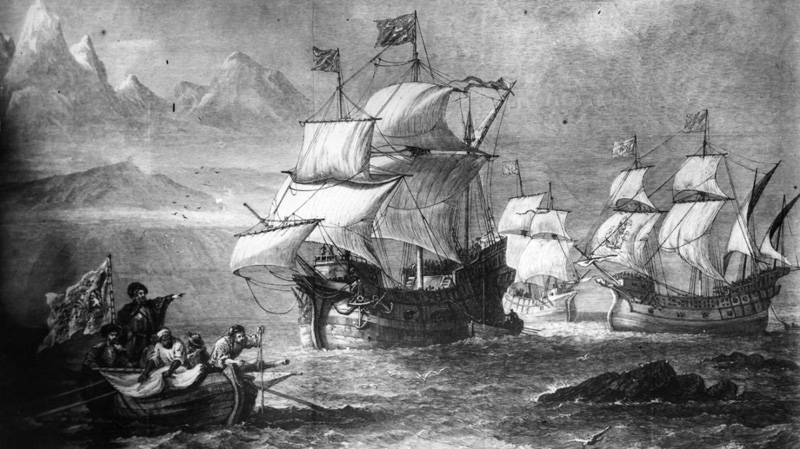
6 September 1522 The ship entered the Spanish port of Sanlucar de Barrameda at the mouth of the Guadalquivir, whose appearance indicated a long and difficult journey. This ship was called "Victoria". Those of the local residents who had a good memory, not without some difficulty, recognized one of the five expedition ships in the arrived wanderer, which sailed from this harbor almost three years ago. It was remembered that the stubborn Portuguese commanded her, whose appointment to this position caused a lot of misinterpretation. It seems his name was Fernan Magellan. However, the residents of Sanlucar de Barrameda did not see the expedition leader himself or his numerous companions. Instead, they saw the battered "Victoria" and on board a handful of exhausted people who looked like the living dead.
The captain of "Victoria" Juan Sebastian Elcano sent the first message to the royal residence Valladolid about the return to Spain of one of the five ships of the "blessed memory of Fernand Magellan." Two days later, “Victoria” was towed to Seville, where the surviving 18 crew members, barefoot with candles in their hands, went to church to thank the Almighty for their, albeit not quite prosperous, return. Juan Elcano was summoned to Valladolid, where he was received by the King of Spain and concurrently the Holy Roman Emperor Charles. The monarch awarded the captain with a coat of arms with an image of the earth and the inscription "You first traveled around me." Elcano also granted the highest annual pension in the amount of 500 ducats, with the payment of which some difficulties arose - the state treasury was empty. However, the organizers of the expedition did not remain in vain, despite the fact that only one of the five ships returned home. The holds of the Victoria were filled with rare and expensive overseas goods, the proceeds from the sale of which more than covered all the costs of the expedition. Thus ended the first world tour.
Gold, spices and distant islands
Began in the XV century, the European colonial expansion continued to gain momentum in the XVI-th. At the forefront of the race for fabulously expensive in the then Old World colonial goods were the powers of the Iberian Peninsula - Spain and Portugal. It was Lisbon that was the first to reach the legendary India and begin to receive the much-desired profits from this. Later, the Portuguese paved the way to the Moluccas, known in Europe as the Islands of Spices.
The success of their neighbors on the peninsula at first glance, too, looked impressive. Having destroyed the last Muslim state in the Pyrenees, the Granada Emirate, the Spaniards found themselves with their hands untied and an empty treasury. The simplest way to solve the problem of the budget was to find a way to penetrate the rich eastern countries, which were spoken about at that time at each court respecting themselves. Around the then royal couple, Their Majesties Ferdinand and Isabella, the temperamental and very persistent Genoese had long been spinning. In some, his stubbornness caused irritation, in others - a condescending smile. However, Cristobal Colon (that was the name of this energetic man) had serious patrons; the Queen also listened to his speeches. As a result, three caravels sailed across the ocean, the navigation of which opened a new European page. stories.
Colon, returning in triumph, or as he was called in Spain, Christopher Columbus talked a lot about the lands he discovered. However, the amount of gold with which he accompanied his narratives was very limited. However, the credibility gained by the discoverer, as India then believed, was very high, and three expeditions went one by one across the ocean. The number of islands and lands discovered by Columbus overseas, all increased, and the joy in Spain from these discoveries decreased. The number of jewels and other expensive goods brought to Europe was small, the local population was not at all eager to work for white strangers without reproaches, or to go into the fold of the true church. The colorful tropical islands did not provoke any lyrical mood among the proud and poor hidalgoes who were hardened in the merciless Mauritanian wars, who were interested only in gold.
It soon became clear that the lands discovered by Columbus are neither China nor the Indians, but represent a completely new continent. In addition, the successfully completed voyage of Vasco da Gama showed the last stubborn skeptics of what real India is and how it can be achieved. Neighbors of the Spaniards on the peninsula counted the growing profits and with a fair amount of irony looked at the Spaniards looking for wealth in the picturesque, but from the point of view of the little-useful islands. The Spanish treasury, like any other, needed replenishment. The winners of the Moors had far-reaching plans. Turkish expansion in the eastern Mediterranean was gaining momentum, a conflict with France was brewing over the Apennine Peninsula, there were other issues in eternally raging Europe. All this required money - and considerable ones.
And in high circles again, as almost 30 years before, an energetic man appeared who claimed that he had a plan for how to get to the Isles of Spices. And, like Christopher Columbus, he was also a foreigner. Moreover, the piquancy of the situation was added by the fact that, until recently, this generator of strategic ideas was in the service of competitors, that is, it was Portuguese. His name was Fernan Magellan.
Portuguese
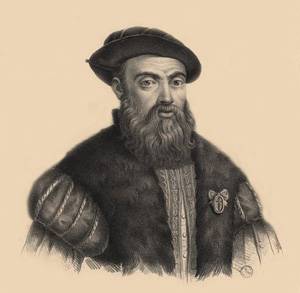
Magellan was neither a projector, nor an adventurer. By the time he began promoting his project in 1518, he was already an experienced mariner and a man knowledgeable in military affairs. He also had extensive knowledge and skills that gave him weight. Magellan was born in 1480 in Portugal, where his last name sounded like Magallansh, in an old aristocratic family with Norman roots. Relatively identified the boy who lost his parents early as a page to Queen Leonore, wife of King João II the Perfect. His court service continued and the new monarch Manuel I. Magellan was noticed due to his exceptional personal qualities, strength of character and good education.
The king allowed the young man to go to the East with Francisco de Almeida, the first vice-king of the Portuguese possessions in India. Arriving in legendary India, Magellan found himself in the thick of political, military and economic events. For a long time, the former actual owners of the local waters, the Arab seafarers were not at all enthusiastic about the dangerous and decisive competitors that appeared. The future great navigator takes part in numerous fighting fights with Arabs. In one of these battles, he was wounded in the leg, which subsequently gave his walk a slight limp. In 1511, under the leadership of the new governor Afonso de Albuquerque, Magellan is directly involved in the siege and capture of Malacca, which has become one of the strongholds of the Portuguese expansion in the East.
Seeing that the local islands are rich in fabulously expensive spices in Europe, the navigator gradually comes to the idea of finding another way to the regions of the Indian Ocean abound in various riches. It was then that Magellan began to form the concept of a path to the East straight across the Atlantic, since the path around Africa seemed longer and more dangerous. For this purpose it was necessary only to find the strait located somewhere, according to the Portuguese, among the lands discovered by Columbus and his followers. So far, no one has been able to find him, but Magellan was sure that he would be lucky.
The matter remained for small - to persuade the king. But with this just and there were difficulties. Returning from the Portuguese possessions in the East, Magellan in 1514 was sent to fight in Morocco. Because of a business incident, the Portuguese had a chance to present his project to the king. However, neither Manuel I, nor his entourage were not interested in the ideas of Magellan - the path to the Islands of Spices around the Cape of Good Hope was considered dangerous, but proven, but the question of the existence of a mysterious strait between the Atlantic and the South Sea, recently discovered by de Balboa, was not considered important. The relationship between the Portuguese king and Magellan left much to be desired: he was denied petitions to the Highest Name twice - the last time it concerned the “fodder” money, relied upon by Magellan as a courtier.
Considering himself insulted, the Portuguese decided to try their luck in neighboring Spain. Asking King Manuel to relieve him of his official duties, Magellan in the fall of 1517 moved to Seville. Along with him, the famous Portuguese astronomer Rui Faleiro arrived in Spain. On the Spanish throne, meanwhile, entered the young Charles I, who came along the female line to the grandson of the famous Ferdinand. In the male line, the young monarch was the grandson of Maximilian I of Habsburg. Soon, Charles became the emperor of the Holy Roman Empire under the name of Charles V. He was ambitious and full of various political projects, so that the initiative of Magellan could come in handy.
Arriving in Seville, Magellan immediately began to act. Together with Faleira, they came to the Council of India located here - an institution that was occupied by newly discovered territories and colonies, and stated that, according to precise calculations, Molucchi, the main source of spices for Portugal, is located contrary to the two monarchies signed by the Pope of Rome agreement in Tordesillas, in the territory allocated to Spain. So, the arisen “mistake” should be corrected.
Subsequently, fortunately for the Portuguese, it turned out that Faleiro was wrong. In the meantime, local authorities of colonial and commercial affairs have listened to the ardent speeches of a Portuguese emigrant with skepticism, advising him to look for listeners in other places. Nevertheless, one of the leaders of this serious organization, Juan de Aranda, decided to personally talk with the Portuguese, and after some deliberation, found his arguments not to be meaningless, especially considering the future modest 20% of the profits.
The following months resembled a slow and purposeful climb along the long stairs of the state apparatus, with consistent penetration into ever higher apartments. At the beginning of 1518, Aranda arranged an audience for Magellan with Emperor Charles in Valladolid. The arguments of the Portuguese and his actual companion Faleyru were convincing, especially since he claimed that the Moluccas, according to his calculations, are just a few hundred miles from Spanish Panama. Karl was encouraged and 8 March, March 1518 signed a decree preparing for the expedition.
Magellan and Faleiro were appointed its leaders with the rank of captain-general. At their disposal were to provide 5 ships with crews - about 250 people. In addition, the Portuguese were promised profits from the company in the amount of one-fifth. Preparations began shortly after the signing of the decree, but continued for a very long time. There were several reasons. First of all, it was unstable financing. Secondly, many were not delighted by the fact that the Portuguese were appointed as leaders of such a large-scale project, with whose homeland Spain had a very difficult relationship. Thirdly, feeling in the role of specialists whose opinion was overlooked, the lords of the Indian Council began to sabotage the preparations for the expedition.
We should not forget about the rolled up arms of the army of suppliers and contractors, who, to the best of their ability, improved their own well-being through the supply of not very high-quality provisions, equipment and materials. All ships preparing to sail, turned out to be “unfortunate coincidence” is not new. The Portuguese authorities also sabotaged the event as best they could. At the court of King Manuel I, the question of the murder of Magellan was even seriously discussed, but this idea was wisely rejected. The navigator’s companion, astronomer Faleiru, sensing which winds were beginning to blow into the still-tense sails of the caravels, considered it good to play madness and stay on the shore. Juan de Cartagena was appointed to the place of the Deputy Magellan, with whom there will still be a lot of trouble, including insurrection.
Despite all the obstacles, the preparation continued. The soul of the whole enterprise was Fernan Magellan. He chose the 100-tonne Trinidad as his flagship. Besides him, the squadron included 120-ton San Antonio (captain Juan de Cartagena, part-time royal controller of the expedition), 90-ton Concepcion (captain Gaspard Quesada), 85 ton Victoria (Luis Mendoza) and the smallest, 75-ton Santiago (commanded by Juan Serano). Crew members were 293 people, including 26 people who were taken on board over the staff. One of them, the Italian nobleman Antonio Pigafetta, will subsequently compile a detailed description of the odyssey.
The exact number of participants in the voyage is still controversial. Some of the sailors were Portuguese - a necessary measure, because their Spanish colleagues were in no hurry to sign up for crews. There were representatives of other nationalities. The ships were loaded with supplies at the rate of two years of sailing and a certain amount of goods for trade with the natives. In addition, in case of poor relationships with the local population, there were 70 ship cannons, 50 arquebuses, crossbows, and about a hundred sets of armor.
10 August 1519 squadron departed from the berths of Seville and down the Guadalquivir down to the port of Sanlucar de Barrameda. Here, waiting for favorable winds, five caravels stood for almost a month. Magellan had something to do - at the first stage of the campaign, part of the food was spoiled, and it had to be hastily replaced. Finally, on Tuesday 20 September, 1519 Squadron left the coast of Spain and headed southwest. None of the pioneers on board had any idea how long their journey would be.
Atlantic and conspiracy
Six days after sailing flotilla arrived in Tenerife in the Canary Islands and stood there for almost a week, replenishing supplies of water and provisions. Then Magellan got two nasty news. The first of them, brought by a caravel that came from Spain, was sent to the captain-general by his friends, who reported that the captains of Cartagena, Mendoza and Quesada had conspired to remove Magellan from the command of the expedition because he was Portuguese, and with resistance kill him. The second news came from a supplier of salted cod: the king of Portugal sent two squadrons to the Atlantic to intercept the ships of Magellan.
The first news caused the need to strengthen the observation of unreliable Spaniards, the second forced to change the route and go across the ocean slightly south of the intended route, which lengthened the already not a small way. New course Magellan laid along the shores of Africa. Subsequently, it became clear that the news of the Portuguese squadrons was false. The flotilla advanced south rather than west as planned, causing confusion among Spanish captains, already annoyed by the very fact of his command. Towards the end of October - the beginning of November, discontent reached its climax.
The first one who lost nerves was Juan de Cartagena, captain of the "San Antonio". By order of Magellan, the ships of his flotilla were to approach the flagship Trinidad every day and report on the situation. During this procedure, Cartagena called his boss not a “captain-general”, as expected, but simply a “captain”. The captain of the San Antonio did not respond to the comment on the need to follow the charter. The situation is heated. A few days later, Magellan gathered his captains aboard the flagship. Cartagena began shouting and demanding an explanation from the expedition leader why the flotilla was on the wrong course. In response, Magellan, well aware of the moods among some of his subordinates, seized the captain of the San Antonio by the collar and declared him a rebel, ordering him to be arrested. Instead, the captain was appointed relative of Magellan Portuguese Alvar Mishkita. However, Cartagena was put under arrest not on the flagship, but on the Concepcion, where the conditions of detention were fairly mild.
Soon the flotilla emerged from a strip of calm and moved to the shores of South America. 29 November 1519 from Spanish ships finally noticed the much-desired land. In an effort to avoid meeting with the Portuguese, Magellan drove his ships along the coast to the south and 13 December anchored in the bay of Rio de Janeiro. After giving rest to the weary carriages and celebrating Christmas, the expedition moved further south, trying to find the coveted strait in the South Sea.
Insurgency
In January, the new 1520 ships of Magellan reached the mouth of the huge La Plata River, opened in 1516 by Juan de Solis. The Portuguese suggested that the strait could be located somewhere in local waters. The smallest and fastest ship of the expedition, the Santiago, was sent for reconnaissance. Returning, Captain Juan Serano said that no strait could be found.
Not lost confidence Magellan moved further south. The climate was gradually becoming milder - instead of the tropics originally encountered on the South American coast, now more and more desert areas were observed from ships. Occasionally, Indians with a rather primitive way of life did not know iron and, apparently, saw white people for the first time. Fearing to miss the strait, the flotilla moved along the coast, and anchored for the night. 13 February 1520 in Bahia Blanca Bay the ships were in an unprecedented thunderstorm, and the lights of St. Elmo were seen on the masts. Moving further south, the Europeans met large herds of penguins, which they had taken as tailless ducks.
The weather deteriorated, becoming increasingly stormy, the temperature dropped, and on March 31, reaching a quiet bay called San Julián (49 ° southern latitude), Magellan decided to stay in it and winter. Not forgetting that the mood in his flotilla was far from calm, the captain-general placed his ships as follows: four of them were in the bay, and the flagship Trinidad anchored at its entrance - just in case. There were good reasons for this - the search for passage did not give results, there was uncertainty ahead, and Magellan's ill-wishers began to spread the opinion that it was necessary to return to Spain.
1 April, Palm Sunday, was given a holiday dinner aboard the flagship Trinidad, to which the captains of the ships were invited. The captains of "Victoria" and "Concepcion" did not appear on him. On the night of April 2, a mutiny began on the flotilla. Juan de Cartagena, who was in custody, was released. Without much difficulty were captured "Victoria" and "Concepción". Captain Alvar Mishkit, appointed by Magellan, was arrested at San Antonio. Only a small "Santiago" remained loyal to the commander of the expedition.
The balance of forces, at first glance, was very unfavorable for the captain-general and his supporters. Two of his ships were opposed by three ships of the rebels. However, Magellan not only lost his head, but also showed determination. Soon a boat arrived at Trinidad with a letter for the expedition leader. The rebellious captains in it put a whole mountain of accusations against Magellan, who, in their opinion, put the expedition to the brink of death. They were ready to submit to him again only as the first captain of equal, and not as the “captain-general”, and then only if the flotilla immediately returned to Spain.
Magellan began to act immediately. Devoted to Magellan algvasil Gonzalo Gomez de Espinosa was sent to Victoria with a letter to her captain Mendoza. When he reached Victoria, he handed Mendoza a letter and a request from Magellan to come to Trinidad for negotiations. When the rebel refused and crumpled the message, Espinosa struck him with a dagger. The officers accompanying the officers seized "Victoria", which soon anchored near the flagship and "Santiago". The situation for those wishing to return to Spain at any cost has deteriorated sharply.
At night, “San Antonio” tried to break into the sea, but waited for him. A ship launched a volley of cannons, and its deck was showered with crossbow arrows. The frightened sailors hurried to disarm the enraged Gaspar Quesada and surrendered. Located on "Concepcion" Juan de Cartagena decided not to play with fire and ceased resistance. Soon a court was held, which declared the leaders of the rebellion and their active accomplices (about 40 people) traitors and sentenced them to death. However, Magellan immediately pardoned them and replaced the penalty with hard labor throughout the winter. Gaspar Quesada, who mortally wounded one of the officers loyal to Magellan, was beheaded and the corpse was quartered. Former rebels were engaged in socially useful work in the form of cutting wood and pumping water from the holds. Pardoned Cartagena did not calm down and began again to lead counter-expeditionary agitation. This time, Magellan's patience turned out to be exhausted, and the royal inspector was left on the shore of the bay along with a priest who actively helped him in propaganda. Nothing is known about their fate.
Strait and Pacific Ocean
The rebellion was left behind, and the parking in the bay of San Julian continued. In early May, Magellan sent the Santiago south to explore, but in stormy weather, he crashed on the rocks near the Santa Cruz River, and one sailor died. With great difficulty, the crew returned to the parking lot. Juan Serano, who lost his ship, was put as captain at the Concepcion. 24 August 1520 Magellan left the San Julian Bay and arrived at the mouth of the Santa Cruz River. There, waiting for good weather, the ships stood until mid-October. October 18 flotilla left the parking lot and moved south. Before going out, Magellan informed his captains that he would look for a passage into the South Sea to 75 ° of southern latitude, and in case of failure he would turn east and move to the Moluccas around the Cape of Good Hope.
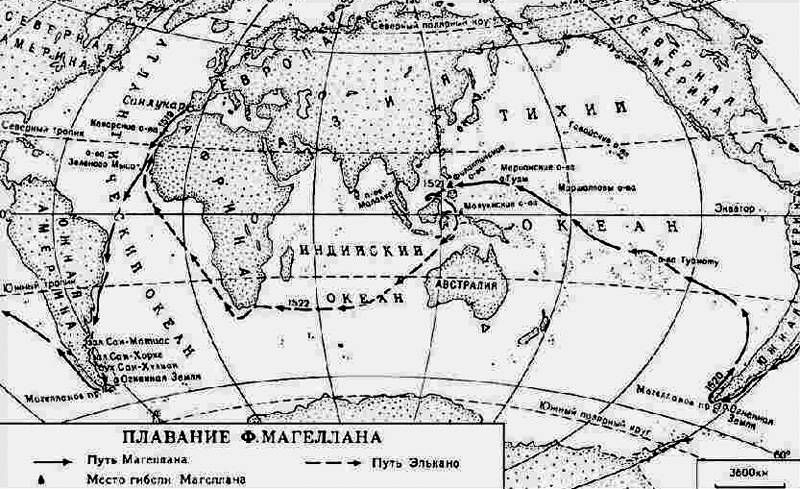
October 21, finally, was found a narrow passage leading into the mainland. Sent for reconnaissance "San Antonio" and "Concepcion" fell into a storm, but were able to take refuge in the bay, from which, in turn, led the new strait - further to the west. The scouts returned with news of a possible passage. Soon the flotilla, entering the open channel, found itself in the intricacies of rocks and narrow passages. A few days later, on the island of Dawson, Magellan noticed two channels: one went in the south-east direction, the other - in the south-west. The first was sent to "Concepcion" and "San Antonio", in the second - the boat.
The boat returned three days later with good news: a large open water was noticed. Trinidad and Victoria entered the southwest channel and stood at anchor for four days. Turning to the previous parking place, they found only "Concepción". San Antonio has disappeared. A search that lasted several days did not give any results. Only afterwards, the surviving members of the expedition who had returned home to the “Victoria” learned about the fate of this ship. On board, a rebellion led by officers broke out. Captain Mishkit, a devotee to Magellan, was shackled, and San Antonio turned back. In March 1521, he returned to Spain, where the rebels declared Magellan a traitor. At first they were believed: the captain-general's spouse was deprived of his financial allowance, and supervision was established. All of this, Magellan did not know - 28 November 1520, his ships finally went into the Pacific Ocean.
Islands, natives and death of Magellan
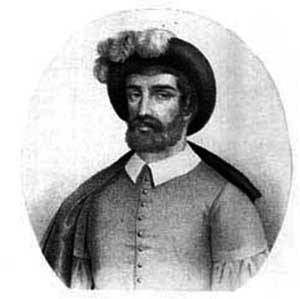
Began a long voyage in the Pacific. In an effort to quickly bring ships out of cold latitudes, Magellan led them first strictly to the north, and after 15 days he turned to the north-west. Overcoming such a vast water area lasted almost four months. The weather was good, which made it possible to call this ocean Pacific. During the voyage, the crews experienced incredible difficulties associated with an acute shortage of provisions. Part of it deteriorated and became unusable. Scurvy was rampant, from which 19 people died. Ironically, the flotilla went past the islands and archipelagoes, including the inhabited ones, only twice attacking small uninhabited pieces of land.
6 March 1521 were seen two large islands - Guam and Rota. The local population seemed to Europeans friendly and thievish. A punitive expedition landed on the shore, destroying several natives and setting fire to their settlement. A few days later the flotilla reached the Philippine archipelago, well, however, known to Chinese sailors. On March 17, the ships anchored off the uninhabited island of Homongh, where a sort of field hospital was set up for sick crew members. Fresh provisions, vegetables and fruits allowed people to quickly regain their strength, and the expedition continued on its way among the many islands.
At one of them, the slave of Magellan from Portuguese times, the Malay Enrique met people whose language he understood. The captain-general realized that the Islands of Spice are somewhere nearby. 7 April 1521 ships reached the harbor of Cebu on the island of the same name. Here the Europeans have already found a culture, although it is far behind technically. Locals found products from China, and the Arab merchants who came across told a lot of interesting things about local lands, which were well known to both Arabs and Chinese.
The Spanish ships made a huge impression on the islanders, and the ruler of Cebu raja Hubomon, on reflection, decided to surrender under the patronage of faraway Spain. To facilitate the process, he, his family, and his closest associates were baptized. Consolidating success and wanting to show the new allies the power of the European weapons, Magellan intervened in the internecine conflict with the ruler of the island of Mactan.
On the night of April 27, the 1521 of Magellan and the 60 Europeans, together with the Allied natives, went by boat to the recalcitrant islet. Because of the reefs, ships could not get close to the shore and support the landing party with fire. The satellites of Magellan were met by superior forces — the natives showered the Europeans with arrows and put them to flight. Magellan himself, covering the waste, was killed. Besides him, 8 Spaniards died. The prestige of the "patrons" fell to a dangerously low level. Their authority simply collapsed after an unsuccessful attempt to ransom the body of Magellan from the natives who were not quite so accommodating. Dejected by the loss of the captain, the Spaniards decided to leave Cebu.
By this time, in exchange for textiles and iron products, they were able to trade a large amount of spices. The local rajah, having learned about the intention of the "patrons" to leave, hospitably invited their commanders (the expedition was commanded by Juan Serano and the brother-in-law of Magellan Duarte Barbosa) at the farewell party. The feast gradually turned into a pre-planned massacre - all the guests were killed. This turn of events accelerated the departure of the ships of the expedition, in whose ranks 115 people remained, most of them were sick. The dilapidated Concepcion was soon burned, and only exhausted Trinidad and Victoria were left with exhausted travelers on the move.
Wandering in unknown waters for several months, in November 1521, the Spaniards finally reached the Moluccas, where they were able to purchase spices in abundance, since goods for exchange survived. Having reached the goal after long ordeals and difficulties, the surviving members of the expedition decided to split up for loyalty so that at least one of the ships would reach Spanish territory. The quick-fix Trinidad was to go to Panama under the command of Gonzalo Espinosa. The second, "Victoria" under the command of Basque Juan Sebastian Elcano, was to return to Europe, taking the route around the Cape of Good Hope. The fate of "Trinidad" was tragic. Stumbling into the winds on the way, he was forced to return to the Moluccas and was captured by the Portuguese. Only a few of his crew, having gone through prison and hard labor, returned to their homeland.
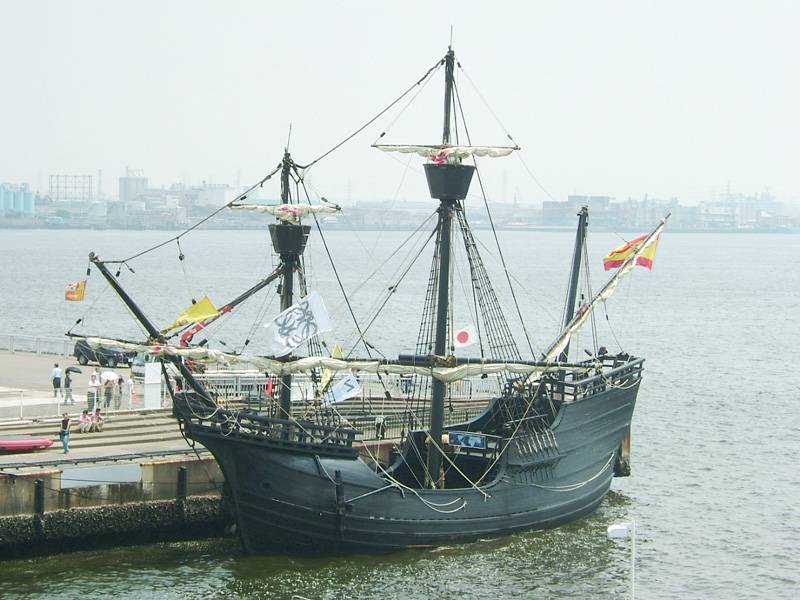
The Victoria Way, which began on December 21 on 1521, was long and dramatic. Initially, the crew had an 60 man on board, including 13 Malays. 20 May 1522. The Victoria circled the Cape of Good Hope. By the time they were in the already familiar Atlantic, the personnel of Victoria were reduced to 35 people. The food situation was critical, and Elcano was forced to enter the Cape Verde Islands that belonged to Lisbon, posing as the Portuguese. It turned out that, traveling from west to east, the sailors "lost" one day. The deception was uncovered, and 13 sailors remained arrested on the shore.
6 September 1522 of the year “Victoria” reached the mouth of the Guadalquivir, making a round-the-world trip. For some time, Magellan's record remained unbroken, until it was done by one gentleman, a subject of Queen Elizabeth, whose expedition was not at all like a merchant or a scientific expedition.
Information